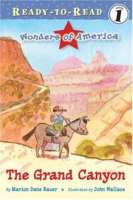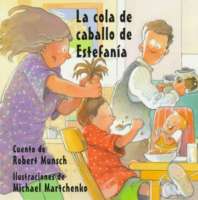
It all started with water. But how did one river make such a deep canyon? Read on and find out.

It all started with water. But how did one river make such a deep canyon? Read on and find out.

A little girl who is determined to strike a blow for nonconformity manages to arrive at school every day with a hairdo more outraegous than the day before. And each time, the cast of copycats grows and grows–until the day she threatens to shave her head! The strong female voice will speak to many, asserting the importance of individuality and independent thought. Full color.

Sports car! (¡Coche deportivo!) Fire truck! (¡Camión de bomberos!)Jumbo jet! (¡Avión jumbo!) Sailboat! (¡Barco de vela!) Young children will love the colorful illustrations of speedy cars, tough trucks, zooming planes and busy boats! Simon Hart’s eye-catching artwork and the simple text in Spanish and English are perfect for little tots just learning to read and understand a second language .


Pepita does not like the color pink and is dismayed to learn that it is the favorite color of the pink little girl who moves in next door.

In a folktale illustrated with Aztec-Mexican artwork, the sun falls asleep behind a rock, blanketing the world in darkness, and is discovered by a faithful lizard, who, with the help of the emperor, encourages the sun to wake up.

When Lucida is unable to finish her gift for the Baby Jesus in time for the Christmas procession, a miracle enables her to offer the beautiful flower we now call the poinsettia.

A poignant bilingual picture book about the death of a grandmother Like most Saturdays, Mr. García’s rooster wakes Lorena much earlier than she wants to wake up. Lorena pulls the covers over her head to block out the day, but she knows she has to get up. Today is no ordinary Saturday. She and her mother will be going to Grandpa’s house. Since Grandma’s recent death, everything has changed for Lorena. Her mother often cries, and Grandpa sits motionless in his chair staring out the window. Though Mamá says Grandma must be in heaven, Lorena misses Grandma, too. She can’t see or touch heaven. Where is Grandma? At Grandpa’s house, Lorena tries to help him stop grieving, but not even Grandma’s miracle words, “sana, sana, colita de rana…” work. How can Lorena help Grandpa? Lorena notices a beatiful carved chest in the corner of the room. When Lorena opens it, she sees a tangle of colors, fabrics, and keepsakes from when Grandma was alive.